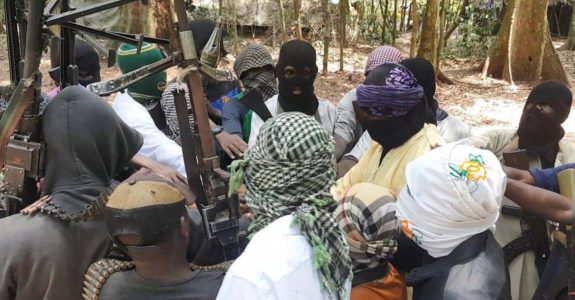
Islamic State claims attack on DR Congo military base near Kamango
Islamic State claimed that fighters from its Central Africa Province affiliate attacked a military base in Bunduguya in Democratic Republic of Congo’s eastern North Kivu province, near the border with Uganda, the third ISIS-claimed attack in three weeks.
In statement released on Wednesday, ISIS said ISCAP fighters on Tuesday, May 7 clashed with Congolese soldiers, “injuring a number of them” while others fled.” It said “various munitions” had been captured.
DR Congo news outlet Actualite.cd reported an attack on a military position Bunduguya which it said was carried out by members of the Allied Democratic Forces militia on Tuesday. It said the attack began at around 8 p.m. and shooting was heard until 10 p.m.
According to Actualite.cd, Bunduguya is less than 7 km (4 miles) north of Kamango in Beni territory.
In a briefing note released on May 2, the United Nations Office for Humanitarian Affairs cited humanitarian sources as saying more than 12,000 people had moved to Kamango and Nobili near the Uganda border on April 21, following armed attacks elsewhere. Due to military operations between Kamango and Beni, humanitarian actors can only access the Kamango Health Zone via Uganda, reducing on-site response capacity, and the IDPs urgently need water, food and health care, OCHA said.
The following day, UNHCR spokesperson Babar Baloch said that in April, up to 60,000 people had fled after fighting around Kamango.
In April, ISIS began to formally recognize its Central Africa Province in DR Congo, when its centrally controlled media outlets began to attribute attacks to ISCAP.
There was earlier evidence that ISIS had ties to the Allied Democratic Forces, a Ugandan-led militant group based in DR Congo that mainly operates in the border area of North Kivu province, but it is unclear if the new ISIS affiliate is the ADF, an ADF splinter group or faction, or a different organization.
Formed in 1995, the ADF is thought to have killed at least 700 civilians and more than 20 U.N. peacekeepers, but although the group has often been blamed for killings, robberies and kidnappings, numerous other armed groups operate in the region and it is difficult to be certain who the true assailants are.
On April 18, ISIS claimed the first attack by ISCAP fighters in DR Congo, saying they had killed three Congolese soldiers and injured five in an attack on an army base in Bovata, near Kamango. Reuters reported the attack killed two soldiers and a civilian, and that it had been carried out by the ADF.
A week later, ISIS’s weekly Al-Naba newsletter published the first known image of ISCAP and claimed that in a second attack on April 21, three soldiers were killed and another wounded in “Kalyanjoki” in the Butembo area.
The city of Butembo is around 85 km southwest of Kamango.
During his first appearance for five years, ISIS leader Abu Bakr al-Baghdadi was seen viewing a document entitled “Wilayat Central Africa,” in video released on April 29.
On May 5, ISIS released images of equipment it said had been seized from the Congolese military in an attack in “Kalyanjoki.”
Meanwhile, eight militiamen, a police officer and four soldiers were killed Wednesday in clashes between security forces and rebels in North Kivu and Ituri provinces, military sources said.
“Eight Mai-Mai rebels were killed in an army counter-offensive after an attack on the town of Butembo” which had targeted military positions, Major Mak Hazukay, a spokesperson for the army in North Kivu province told AFP.
One rebel was injured and brought to hospital.
Butembo police chief Colonel Paul Polo Ngoma said a border policeman was killed by the attackers, and had his weapon taken.
In neighboring Ituri province, four soldiers died in a militia attack on an army location, said Lieutenant Jules Tshikudi, a provincial army spokesperson.
The two provinces, rocked by a violent insurgency, are also battling a fresh Ebola outbreak, which the DRC health ministry says has killed more than 1,000 people since August last year.
Butembo is considered to be the epicenter of the outbreak, the tenth since Ebola was first identified in 1976 in what was then Zaire.
Dozens of armed groups compete for control of eastern DRC’s vast deposits of minerals, including gold, diamonds, copper and coltan.
Among them, Mai-Mai “self-defense” armed units are accused of attacks on Ebola treatment centers. A Cameroonian doctor attached to the U.N.’s World Health Organization was killed in an attack by a rebel group last month.
On Tuesday, a treatment center at a hospital in Katwa, near Butembo, was set on fire, according to the health ministry.
Source: Defence Post





